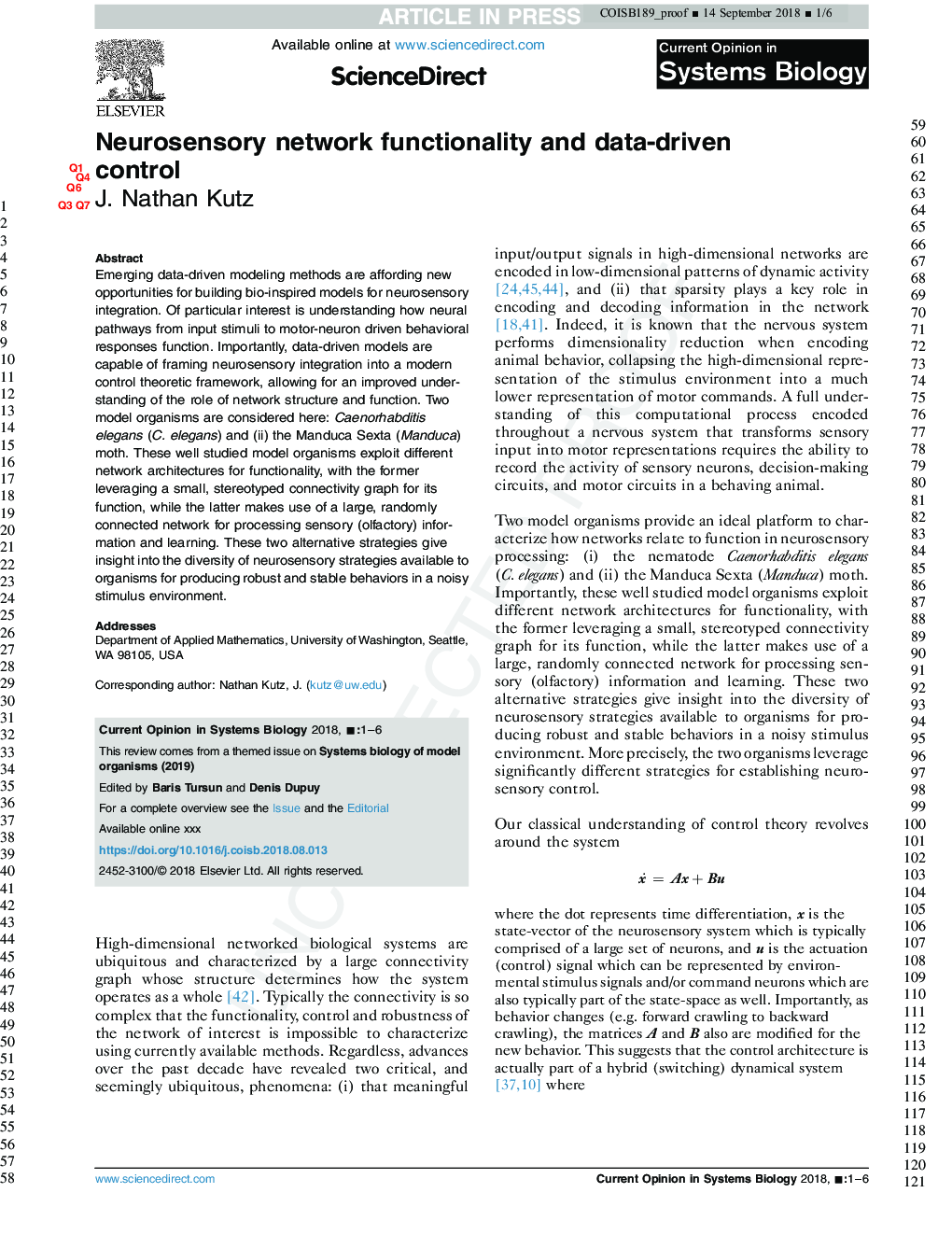| Article ID | Journal | Published Year | Pages | File Type |
|---|---|---|---|---|
| 11030320 | Current Opinion in Systems Biology | 2019 | 6 Pages |
Abstract
Emerging data-driven modeling methods are affording new opportunities for building bio-inspired models for neurosensory integration. Of particular interest is understanding how neural pathways from input stimuli to motor-neuron driven behavioral responses function. Importantly, data-driven models are capable of framing neurosensory integration into a modern control theoretic framework, allowing for an improved understanding of the role of network structure and function. Two model organisms are considered here: Caenorhabditis elegans (C. elegans) and (ii) the Manduca Sexta (Manduca) moth. These well studied model organisms exploit different network architectures for functionality, with the former leveraging a small, stereotyped connectivity graph for its function, while the latter makes use of a large, randomly connected network for processing sensory (olfactory) information and learning. These two alternative strategies give insight into the diversity of neurosensory strategies available to organisms for producing robust and stable behaviors in a noisy stimulus environment.
Related Topics
Physical Sciences and Engineering
Computer Science
Computer Science (General)
Authors
J. Nathan Kutz,
